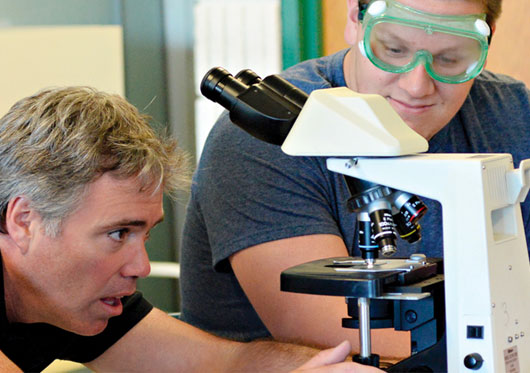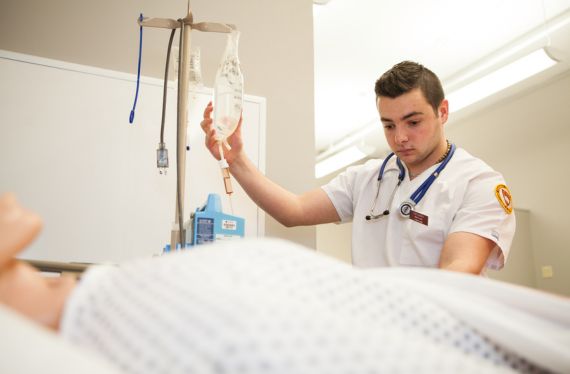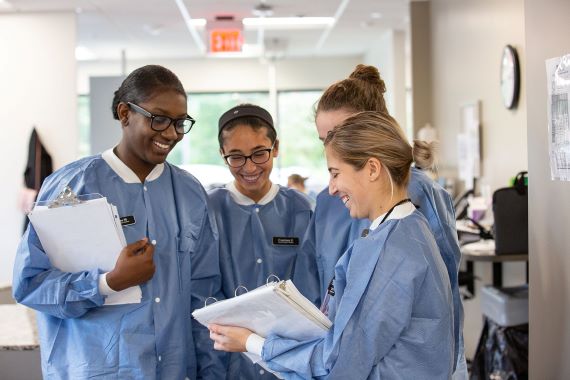Following a disrupted spring semester that saw Regis College quickly pivot to remote learning due to the COVID-19 pandemic, faculty have spent the summer taking best practices and lessons learned to develop a fall semester curriculum that will be unlike any other.
Faculty planned for at least two weeks of remote learning at the start of the semester, followed by some remote and hybrid courses. And when the university announced last week the decision to have a majority of courses taught remotely this fall, the faculty was ready.
“Since I arrived at Regis in March, I have seen how the faculty and staff have worked tirelessly to ensure all students were able to make academic progress in their chosen major,” said Mary Driscoll, PhD, vice president of academic affairs. “The faculty learned a lot about what worked well in a remote setting this spring and have shared best practices with one another. I continue to be impressed by their dedication, creativity and flexibility.”
One benefit faculty have had in their summer preparations is time. Over the past few months, faculty across the university have immersed themselves in workshops, read countless articles, and shared experiences on a “Teaching at Regis” blog to improve their remote instruction skills.
“A task force was created as soon as we went to remote in the spring and we started determining what faculty would need to be ready for continued remote instruction,” said Ericka Hollis, PhD, associate dean of online assessment and faculty development. “Our mission is to meet the needs of our various learners, regardless of modality, and we are giving faculty the tools to do that in this unique time.”
Some of those workshops included how best to engage students on Zoom classrooms, how to set expectations for everyone involved in a remote learning environment, and using tools that will foster collaboration among students learning in different locations.
“Students this fall will recognize that faculty now have more tools at their disposal and have had the chance to put more thought into this,” said Hollis. “And I encourage students to let the faculty know when something isn’t working. Our students should feel comfortable asking for help and advocating for themselves.”
One of the most significant changes to this fall semester is the two, eight-week terms. Edna Pressler, PhD, instructional designer in the Center for Instructional Innovation, worked with faculty to adjust their courses to the new schedule. Those changes centered around thorough discussions about equity and inclusion, such as the needs of students without reliable internet access or whose living conditions are not conducive to learning.
“We worked with faculty on best practices for a condensed, more fast-paced course and how to make the most of the 8/8 format,” Pressler explained.
A key element to that plan was creating consistency across courses by developing course templates. “This fall in courses with multiple sections, such as our first-year English course, are going to look the same,” said Hollis. “What will be different is how the course will be facilitated.”
For courses that are more hands-on, such as labs, faculty have worked to make sure students are fulfilling the lab components and achieving the course objectives. Leslie Bishop, PhD, the chair of the STEM Department who is part of the remote lab task force, said that means some students will conduct experiments at home with lab kits, others will utilize online interactive labs, while others will critically analyze experiments that faculty will conduct on video.
“We’ve had a lot of time to investigate all the different ways to carry on the labs,” Bishop said. “The hands-on experience is obviously best, but given the situation we are finding excellent alternatives.”



